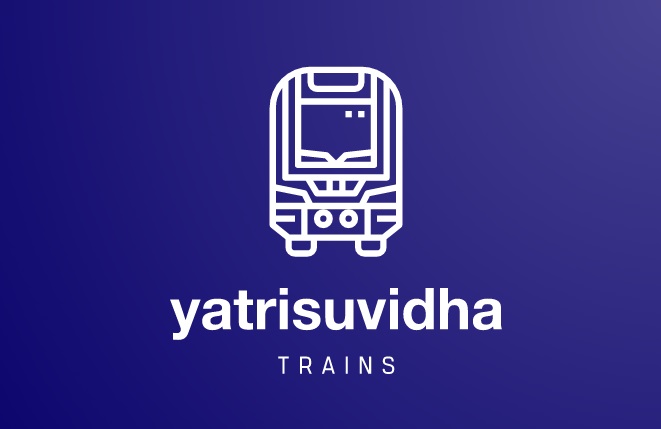
The Indian Railways reservation system is one of the most sophisticated and widely used systems globally. Among its various types of waiting lists, PQWL, or Pooled Quota Waiting List, is one of the most significant.
PQWL is, its characteristics, factors affecting its confirmation chances, and strategies to increase the likelihood of securing a confirmed ticket.
What is PQWL?
PQWL stands for Pooled Quota Waiting List. It applies to passengers boarding at an intermediate station and alighting at another intermediate station within a train’s route. Unlike General Quota (GNWL), which covers the train’s starting point to its endpoint, PQWL focuses on specific segments between stations.
For instance, in a train running from Station A to Station E, a passenger traveling from Station B to Station D would fall under the pooled quota if tickets for this segment are available. Tickets under this quota have a separate allocation, and when demand exceeds supply, a waiting list is generated.
Characteristics of PQWL
Intermediate Route Focus: PQWL caters to passengers traveling between stations that are not the train’s origin or destination.
Smaller Quota Allocation: The pooled quota typically has fewer seats compared to the General or Tatkal quotas, making it highly competitive.
Dynamic Confirmation Process: Confirmation of PQWL tickets depends on cancellations in the specific segment of the train route.
Unique WL Numbering: Unlike other waiting lists, PQWL tickets are identified with distinct prefixes, such as PQWL/1, PQWL/2, etc.
Factors Affecting PQWL Ticket Confirmation
Route Popularity:
Highly popular segments are more likely to experience heavy demand, reducing confirmation chances.
Conversely, less-traveled routes often have higher chances of PQWL ticket confirmation.
Quota Allocation:
Trains have limited seats for the pooled quota, making confirmation harder when demand is high.
Seasonality:
Peak travel seasons, such as festivals, holidays, and summer vacations, see lower PQWL confirmation rates due to increased demand.
Train Type:
Premium trains like Rajdhani, Shatabdi, or Vande Bharat often have tighter quotas, impacting PQWL confirmations.
Regular express trains may have better PQWL availability.
Cancellation Rates:
Confirmation chances increase when other passengers cancel tickets within the PQWL segment.
Booking Time:
Early bookings generally have a better chance of confirmation compared to last-minute bookings.
Class of Travel:
Higher-class tickets (e.g., First AC) have a smaller quota, which may affect PQWL confirmation chances. Lower-class coaches (e.g., Sleeper or Second Sitting) often have better odds.
How PQWL Confirmation Works
Dynamic Status Update: When a passenger cancels their ticket in the same segment, the first person on the PQWL list moves closer to confirmation.
Chart Preparation: The final confirmation depends on the status of the waiting list at the time of the reservation chart preparation, typically 3-4 hours before the train’s departure.
Priority System: If other waiting lists (e.g., GNWL or RLWL) exist, PQWL might be given lower priority, further influencing confirmation chances.
Tips to Improve PQWL Confirmation Chances
Early Booking: Booking tickets as soon as the reservation window opens increases your chances of securing a seat.
Alternate Trains: Consider less popular trains or different departure times for better confirmation odds.
Class Flexibility: Opt for lower travel classes if confirmation in higher classes seems unlikely.
Route Splitting: Book separate tickets for smaller segments instead of relying solely on PQWL.
Monitor Cancellation Trends: Regularly check the status of your ticket and observe patterns in cancellations for your route.
Understanding Confirmation Probability
The confirmation probability for a PQWL ticket varies based on the following scenarios:
High Cancellation Trend: If your segment experiences frequent cancellations, your PQWL ticket is more likely to be confirmed.
Shorter Waiting List: A smaller initial waiting list number improves the chances of confirmation.
Low Demand Route: Tickets for less popular routes or off-peak times are easier to confirm.
Tools to Predict PQWL Confirmation Chances
IRCTC Official App:
Displays real-time ticket status updates.
Provides estimated confirmation probabilities.
Third-Party Platforms:
Websites like Trainman or ConfirmTkt use algorithms to predict confirmation chances.
These platforms analyze historical data and trends for better accuracy.
Common Challenges with PQWL Tickets
Lower Priority: PQWL tickets often receive lower priority compared to GNWL and Tatkal quotas.
Dependence on Cancellations: Confirmation relies heavily on cancellations in your travel segment.
Uncertainty: Passengers might need to make alternate travel arrangements if confirmation is not achieved.
Case Studies and Examples
Example 1: High Confirmation Route
Route: A suburban station to a popular city.
Scenario: A passenger books a PQWL ticket with an initial status of PQWL/5. Due to multiple cancellations, the ticket is confirmed before chart preparation.
Example 2: Low Confirmation Route
Route: A tourist destination during peak season.
Scenario: A passenger books a PQWL ticket with an initial status of PQWL/10. Despite being early on the list, the high demand results in the ticket remaining unconfirmed.
FAQs About PQWL
- Can I travel with a PQWL ticket if it remains unconfirmed?
No, unconfirmed PQWL tickets are automatically canceled, and passengers cannot board the train.
- Does PQWL have a higher confirmation rate than RLWL?
PQWL generally has a lower priority than RLWL, but it depends on the specific train and route.
- What happens if my PQWL ticket is partially confirmed?
Partially confirmed tickets allow passengers to travel in the allocated berth or seat, while the rest remains unconfirmed.
PQWL tickets, though challenging to confirm, are a vital component of the Indian Railways reservation system. Understanding its dynamics, leveraging tools to predict confirmation chances, and employing strategic booking methods can improve your odds. While PQWL might seem daunting, careful planning ensures a smoother travel experience.

Leave a Reply